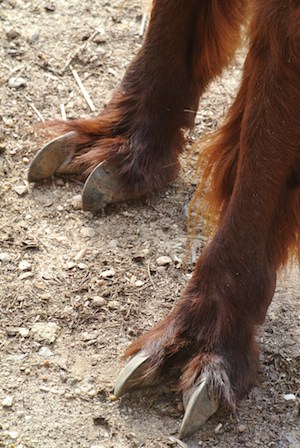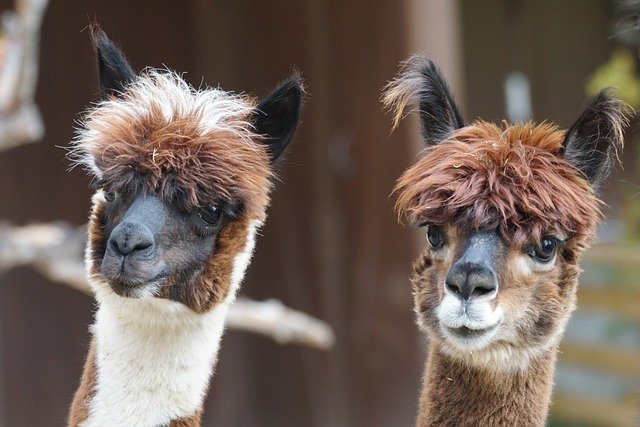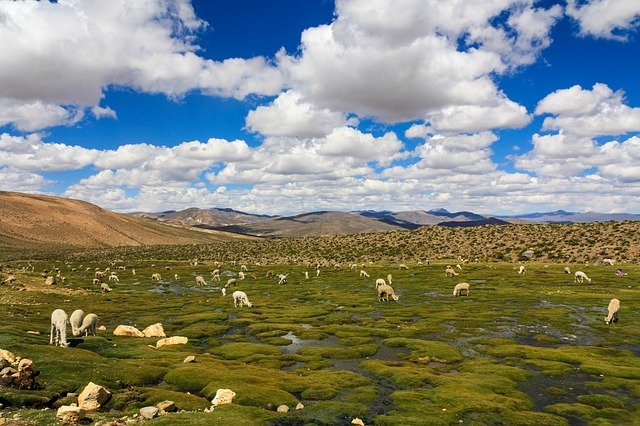PERU
A Fleece-y Species
By Charlotte McGlone
Chapel Hill, NC, United States
When it comes to warm, soft, and fuzzy, there’s nothing like an alpaca. This animal’s coat is made of silky, luxurious fibers that are warmer than wool, softer than cashmere, and hypoallergenic.
Alpaca are native to the altiplano (“high plain”) region of the Andes. This area includes parts of four countries (Peru, Bolivia, Chile, and Argentina) at an average elevation of 12,300 feet. The climate is cool year-round, with the ground remaining frosted for over six months at a time, so this species has developed thick, velvety fleece to retain warmth.
Alpaca in Peru
Estimates are that 3.6 million of these animals reside within Peru’s borders, comprising 80 percent of the world’s population. There are thought to be at least 50,000 families in the altiplano that raise alpaca for income.
These creatures eat less food than others of their size, and the sparse native grasses of the high plain provide all the nutrition they need. In fact, they need to eat only 2 percent of their body weight to remain healthy, because of their highly efficient digestion.
 Alpaca stomachs have three compartments that extract all possible nutrients from their forage. Also, they have developed adaptations to preserve their food supply, such as two-toed, padded feet to tread gently on the vegetation and consuming only exposed leaves so that the roots can regrow.
Alpaca stomachs have three compartments that extract all possible nutrients from their forage. Also, they have developed adaptations to preserve their food supply, such as two-toed, padded feet to tread gently on the vegetation and consuming only exposed leaves so that the roots can regrow.
Fabulous Fleece
The most valuable part of an alpaca is its fleece, with annual exports of more than US$100 million. Alpaca fleece is used to make everything from gloves to sweaters to blankets. It comes in 22 naturally occurring colors and sells for US$2 to US$4 per ounce, depending on its quality.
In 2014 the Peruvian government sought to promote this fiber by persuading five fashion designers to travel from New York City to learn about it. Their six-day trip included meeting Indigenous herders and watching how the fleece is transformed from yarn to fabric to clothing. The global market for alpaca apparel and accessories is growing, because consumers view the products as ethical and sustainable.
Not only is alpaca fiber incredibly silky and warm, it is also durable. It has a hollow, water-resistant structure that protects it from staining or wrinkling. Ancient woven cloths with alpaca threads have been found in archeological sites in southern Peru dating back to 200–300 BCE.
So the next time you wrap up in your alpaca blanket, remember it’s not only fuzzy and fashionable, it’s a family heirloom!
Have a suggestion for this story? We’d love for you to submit it!


Blank
Blank
Math Resources
- If the temperature drops by 4°F for every 1,000 feet of elevation, and the average temperature is 80°F at sea level, what is the average temperature of the place where alpacas live?
- Knitting an alpaca sweater requires about two pounds of wool. Consider all the steps involved in acquiring an alpaca sweater from a store and determine the fair price for its production. How much should an alpaca sweater cost?
- If a small alpaca blanket costs around US$160.00, how much would it cost a luxury hotel to include one in each of its 300 rooms? If a hotel blanket is used for approximately a year, how much does the hotel pay daily for one blanket?
- Determine how much food you consume in a day. What percentage of your body weight do you consume daily? How does this compare to an alpaca? If an average adult alpaca weighs about 170 pounds, how much food does it consume daily?
Extension Question
In 1991, the government of Peru lifted its ban on the export of live alpaca to other countries. What do you see as the pros and cons of a ban like this one?
Explore Further
- Website of the US-based Alpaca Owners Association
- Facts about alpaca
- Information about climate change’s impact on alpaca in Peru
- Video of a herd of alpaca
Share Your Story
Write your own Global Math Story and send it to us!
Sorry, the comment form is closed at this time.